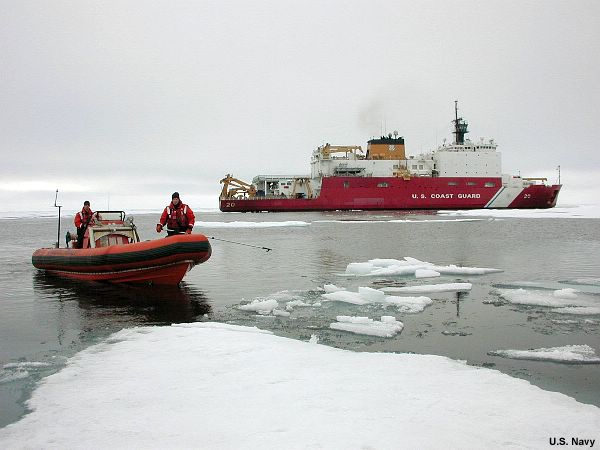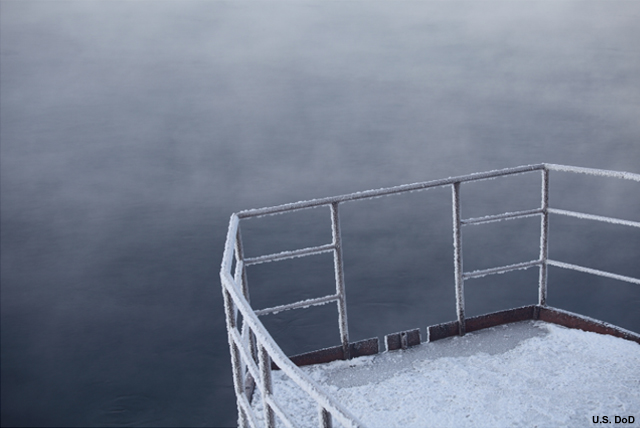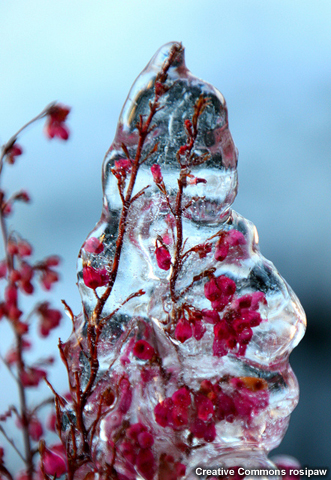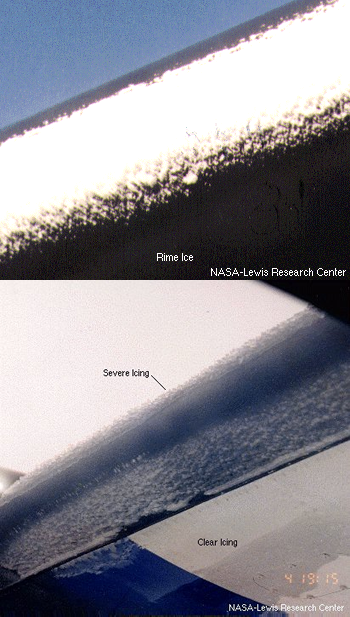Sea Ice and Ice Accretion

Eight days into your voyage, the Kearsarge is located at 72.49 degrees North, 59.12 degrees West. Now that you are nearer the pole, ice is a major concern and you will need to report any observed sea ice or ice accretion on the ship as part of your observations.
The sea ice and ice accretion observations are reported in the Ship Synoptic Code.
Rime Ice and Clear Ice

Ice accretion is the rime ice or clear ice that builds up on the outside of ship structures. Rime ice forms best at temperatures near 14 degrees F. It is relatively soft and usually has a whitish, opaque color. It is usually the result of fog or blowing spray.

Clear (or glaze) ice has no color and forms when temperatures are between 25 degrees F and 32 degrees F in dense fog, freezing rain, or blowing spray. Clear ice is hard and will typically form slowly.

Both the development and break-up of ice accretion are important to note in the observation. Observe the ice accretion and determine which condition applies:
- ice is present but not building up
- ice is building up, and whether the build-up is rapid or slow
- ice is melting, and whether the melting is rapid or slow
If rime ice or clear ice are present, you should also measure its thickness. In areas where the ice is generally uniform in thickness, chip the ice down to the ship's surface and measure the thickness in centimeters. Repeat the measurement for several areas and average the thicknesses.